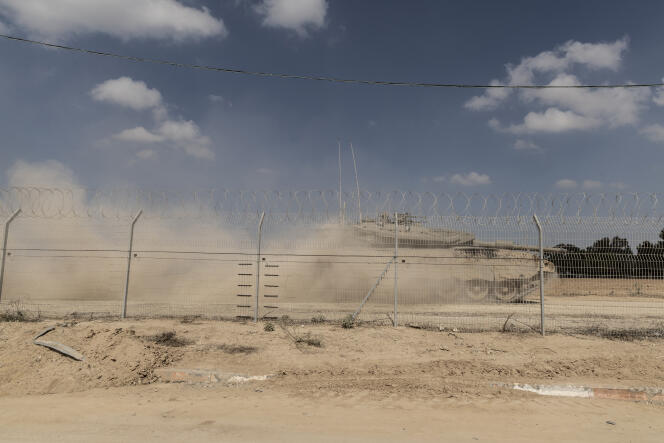


"We are fighting with full force, on every front, we have gone onto the attack. Every member of Hamas is a dead man." In his October 12 communiqué that followed the creation of a national unity government, Israeli Prime Minister Benjamin Netanyahu confirmed Israel's aims were those of a total war. No longer is this about restoring deterrence or diminishing the armed group's capabilities, it's about destroying Hamas and its affiliated groups, considered terrorists by the Israeli army.
"The guidelines for a military operation dictate the parameters of the deployment of force. In the past, the idea was to use this force with restraint and maintain a weak Hamas that could run the Gaza Strip. It was a hostile entity, not an enemy. The idea was not to invade the enclave. But when the organization executed its diabolical plan, it changed the rules of the game. So Israel is changing its own," explained Lieutenant Colonel Peter Lerner, a spokesperson for the Israeli army.
Ever since the Islamic resistance party took control of the strip in 2007, the Israeli army has carried out major offensives to reduce its military capabilities. When added to organizations such as Islamic Jihad and the Popular Front for the Liberation of Palestine, Gaza's forces are estimated to number around 30,000 fighters. The army had a list of leaders and facilities to be eliminated with different priority levels.
Herzi Halevi, the Israeli army's chief of staff, has been clear: Israel's targets are wide-ranging, from Yahya Sinwar, Hamas' political leader, to the first commando that breached the separation barrier. This time, "the entire institution is a target," said Lerner. Other cadres of the movement, such as its finance minister, "who financed the weapons and technical developments that made this invasion possible," are being targeted. But the spokesperson added that so is "infrastructure, and first and foremost the tunnels." This network of tunnels built by Hamas since it took control of the enclave is nicknamed the "Gaza metro." No one knows its exact dimensions, entrances and exits, or what's inside.
Israel is taking the necessary steps to achieve its objectives. Never before had the army mobilized so many reservists – 300,000 soldiers. Despite the enormous costs involved, it also hasn't announced a time limit.
The army claimed that it intends to carry out its offensive according to "the rules of international humanitarian law," or at least its interpretation, which is more maximalist than that of the European or American armies. The Dahiya doctrine, drawn up in 2006 by Gadi Eizenkot, former chief of staff of the Israeli army – who recently joined the Israeli "war cabinet" as an observer – is based on the use of disproportionate force to achieve objectives, including the targeting of civilian areas to eliminate military targets. The name of the doctrine refers to a neighborhood in the southern suburbs of Beirut where the Hezbollah leadership was based during the summer 2006 war between Lebanon and Israel. The Goldstone report commissioned by the United Nations after the first conflict between Israel and Hamas in 2008-2009 concluded that the doctrine had been "designed to punish, humiliate and terrorize a civilian population."
You have 33.18% of this article left to read. The rest is for subscribers only.
